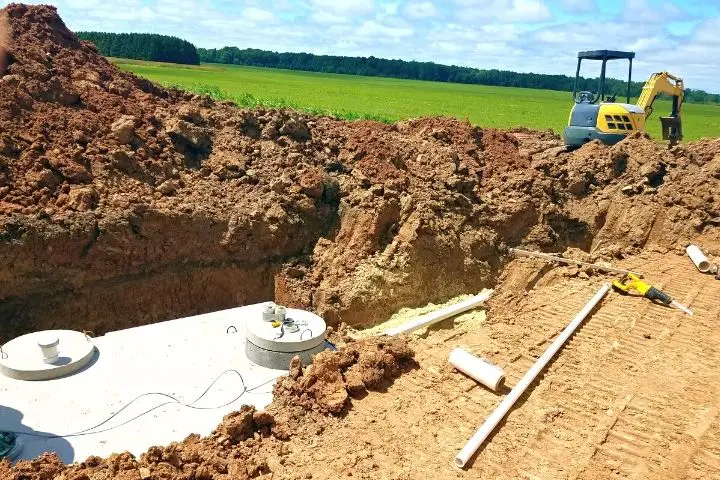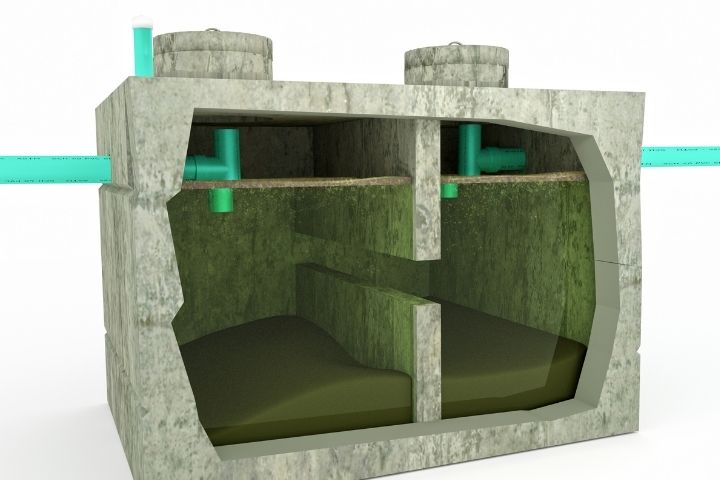Can a Septic Tank Be Moved – All You Need to Know (Yes, It’s Possible!)
Yes, you can move a septic tank to a new location. However, the total process isn’t so simple and you will need the support of professionals for the job.
For some of us, a septic tank can be an unfamiliar concept. But for those households depending on it, it’s of critical importance.
So, what are the points you need to keep in mind before shifting a septic tank?
Let’s get down to it!
Reasons for Moving A Septic Tank
I’m not talking about personal reasons here (such as not liking the view from your bathroom). Sometimes, you may NEED to move the tank, and here’s why:
- You may need to expand the boundaries of your house or add new facilities. So septic tank shifting is necessary to make space for the new constructions.
- The movement might be necessary due to any new rules and regulations in your locality.
- In case the drain field soil is damaged it is no more suitable for treating the waste material. This can cause raw sewage water to collect on the surface. So moving the system to a new location and setting up a new drain field might be necessary.
Whatever the reason, the process of relocating a septic tank is not simple at all. Not only does it needs specialized skills, but heavy equipment as well.
(And a lot of cash. But more on that below.)

Now, there are two main aspects of moving a septic tank. Firstly, the tank is uncovered and taken out. Then, it is shifted to the new location and the necessary connections are made.
The process involves the following steps.
- The manhole cover over the tank along with the risers and inspection pipes are removed.
- An excavator removes the soil above the tank. After some initial excavation, the workers generally use hand shovels to prevent any damage to the tank. This is a labor-intensive process that needs much time and effort.
- Next, the inlet and outlet pipes connected to the tank are disconnected.
- The excavator then digs up the sides of the septic tank to expose the walls. Lifting the tank is not possible until the soil is fully removed.
- To lift the tank, a lifting bar is connected with the lifting eyes of the tank. This is a delicate process as there might be some ground suction force acting on the bottom of the tank. The lifting cables are moved slowly to ensure that the tank isn’t damaged.
- At the same time, the hole for the new septic tank is excavated. The tank is lifted on the truck, shifted, and then placed in the new hole.
- The tank is lowered into the new hole and the inlet and outlet pipes are connected back. The tank is then covered back with soil and the top layer is compacted. Finally, the manhole cover and risers are replaced.
In addition to that, the elevation of each component of the septic tank is also checked. This is to ensure the proper flow of the wastewater. If the ground is sloped, special methods are used to prevent flooding of the trenches or drain lines with wastewater.
And if the existing septic tank isn’t in good condition, you will have to replace it with a new one.
Considering the complex operations involved in the process, you need to take professional help to get the job done. With the right planning, you can cut down the costs and time needed for the shifting.
How Much Does It Cost to Move a Septic Tank?
It is not easy to determine the exact amount you’ll need to spend to move a septic tank. It depends on multiple factors like the size of the tank, the material of the tank, and the depth at which it’s installed.
But the fact is, it will burn a huge hole in your wallet. An even bigger one than installing it to begin with!
When you think about it, moving a septic tank involves twice the amount of soil excavation than installing a new septic tank. First, you need to dig out the old tank and then excavate a new hole for it.

In addition, there are the expenses of installing new pipelines and replacing the drain field if needed. Add to that soil testing expenses if required.
These costs add up to make the process more expensive.
The overall costs can range anywhere between $1,500 to $7,000. Note, the national average cost in the US for installing a septic tank is around $6000.
But when the unpredictable expenses start cropping up as they always do, the total price may easily double or even triple up.
So How Does a Septic System Work?
Considering the age of human civilization, septic systems aren’t so old. They have only been around for about 160 years. The system was first used in France in 1860.
When designed properly, a septic tank can easily serve your home for around 20 years. And if you prefer eco-friendly choices, using the septic tank is a good option
To understand the process of moving the septic tank, you need to have an idea about the system.
A septic tank is an underground, watertight tank generally made from cement, steel, or polyethylene. It is commonly used in localities without a centralized sewer system. These tanks are mostly rectangular or round in shape.
The main purpose of the tank is to store and treat the wastewater generated from bathrooms, kitchen drains, and laundry. The waste material is treated by a combination of sedimentation and biological decomposition.
The construction of the septic tank is relatively simple. The main chamber connects to an inlet and outlet pipe. There’s a manhole at the top along with inspection pipes.
Here’s an outline of how the system works.

- The wastewater from the house enters the tank through the inlet pipe.
- The solid waste settles at the bottom in the form of sludge. The oil and grease float at the top.
- The liquid wastewater moves to the drain field through an outlet. This is an area of unsaturated soil that filters the wastewater.
- The solid waste is broken down by bacteria to some extent. The rest gets collected at the bottom.
If you are thinking of using the liquid by-products from a septic tank to act like bokashi tea, forget it. Chances are, you will ruin your garden that way.
Once too much sludge collects at the bottom of the tank, the ability of the bacteria to break down the material comes down. So periodic cleaning of the sludge from the tank is necessary.
For a cheaper and more environment-friendly waste disposal system, composting toilets are a good option. But they need more maintenance than septic tanks.
Frequently Asked Questions
Do you need planning permission to move a septic tank?
Generally, the installation of septic tanks requires permission from local authorities. Make sure to check the local regulations regarding the moving of septic tanks.
What is the difference between a septic tank and a cesspit?
The cesspit is also an underground tank for holding the household wastewater. However, the water is neither drained nor treated. So a cesspit requires more frequent cleaning than septic tanks.
How often should a septic tank be emptied?
Septic tanks should be emptied between 1 to 5 years depending on their capacity and type. The more mechanical parts the tank has, the more often you should have it pumped out.






